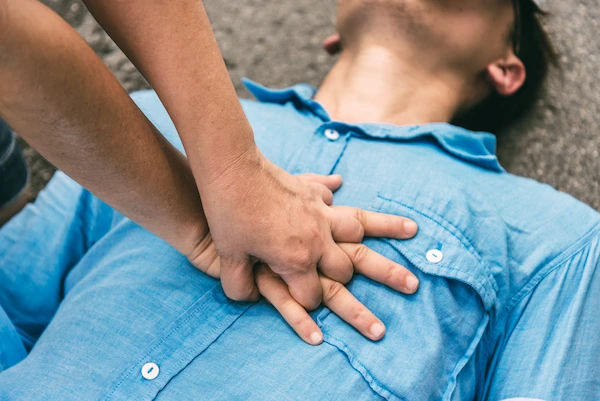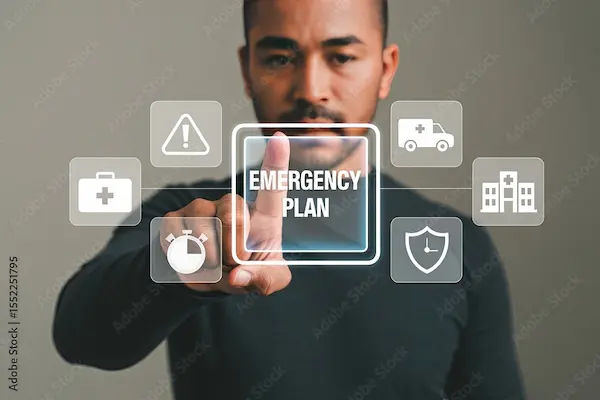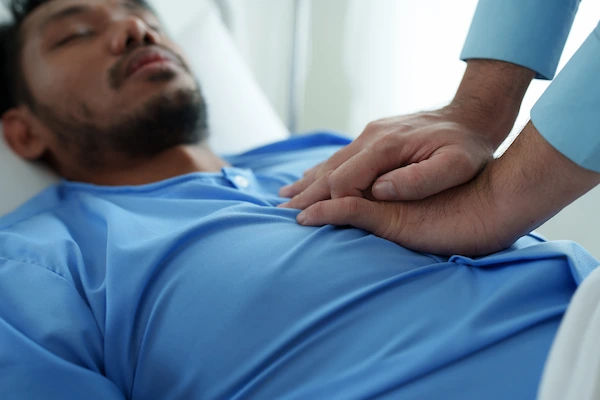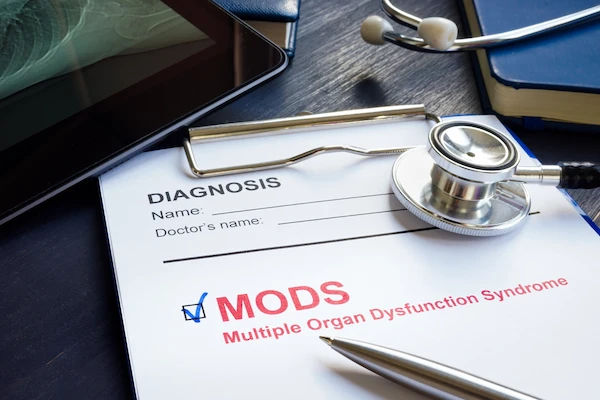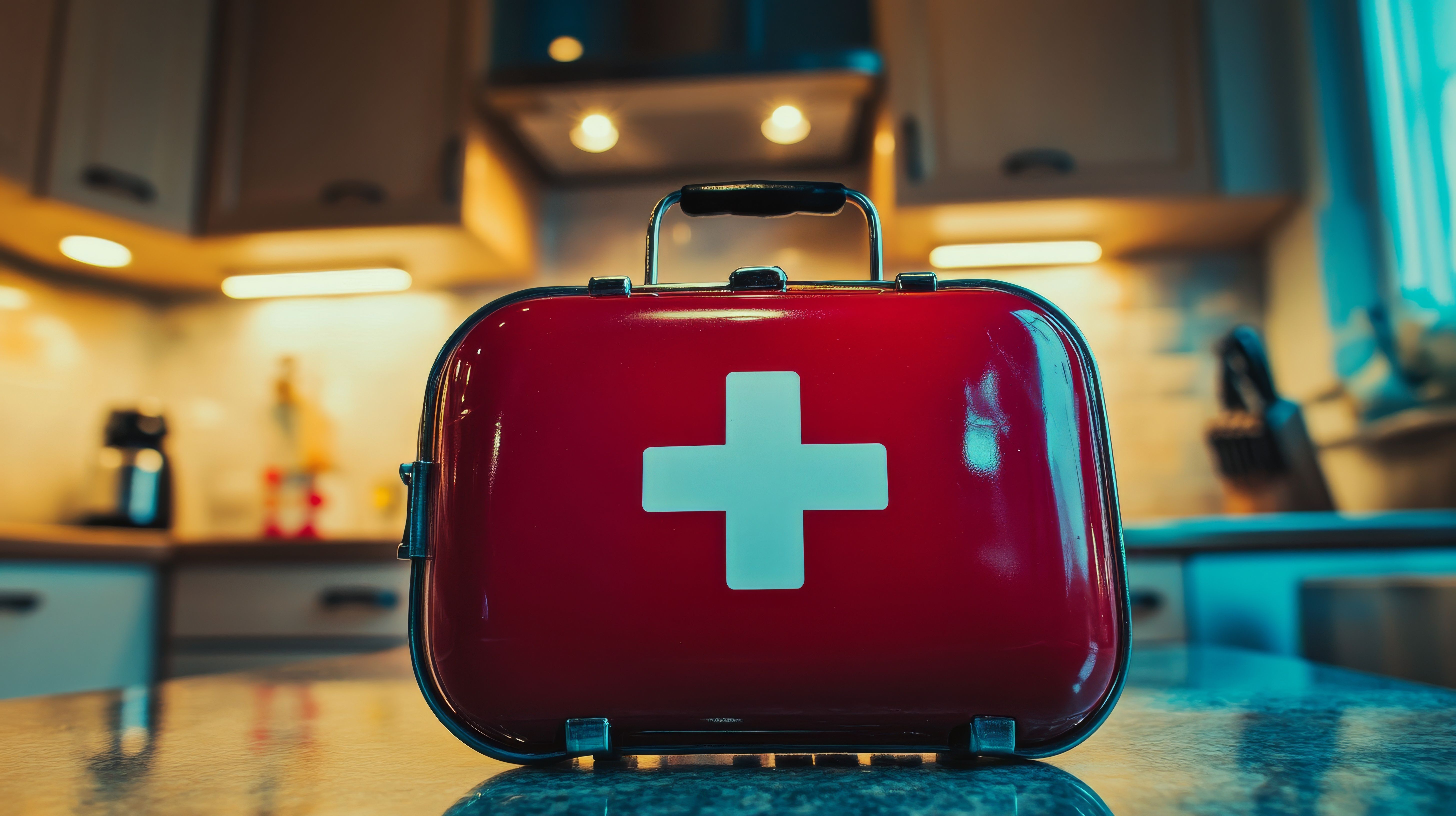Guide to First Aid Kits For Outdoor Adventures
Discover essential items and tips for assembling a first aid kit for outdoor adventures to stay safe and prepared in any situation.

Written by Dr. Siri Nallapu
Reviewed by Dr. Rohinipriyanka Pondugula MBBS
Last updated on 26th Sep, 2025

Introduction
Venturing into the great outdoors offers unparalleled freedom and connection with nature. But with that adventure comes a degree of risk, far from the immediate help of an emergency room. A slip on a rocky trail, a sudden allergic reaction to a plant, or a case of severe dehydration can quickly turn a dream trip into a crisis. This is where a well-stocked and well-conceived outdoor first aid kit becomes your most vital piece of gear. It’s not just a box of bandages; it’s your portable emergency room, your insurance policy for peace of mind. This comprehensive guide will walk you through everything you need to know, from the absolute essentials to advanced customisation, to build a kit that matches your adventure level. We’ll cover the critical components, how to tailor your aid kits for specific outdoor activities, and the basic skills to use them effectively, ensuring you’re prepared for whatever the trail may bring.
Why a Standard Home Kit Isn't Enough for the Outdoors
The basic first aid kit you keep in your bathroom cabinet is designed for minor household accidents: paper cuts, small burns from the stove, or a headache. It assumes you are minutes away from a pharmacy or a doctor. An outdoor first aid scenario is fundamentally different. You might be hours or even days from professional medical help, in variable weather conditions, and dealing with injuries specific to wilderness activities. A standard kit lacks the supplies to manage serious bleeding, stabilise a sprained ankle for a long walk out, or treat waterborne illnesses. Your adventure aid kits need to be more robust, versatile, and designed for prolonged care and self-reliance.
The Great Debate: Pre-Assembled Kits vs. Building Your Own
Before you start shopping, you need to decide on your approach. Both pre-made and DIY kits have their merits, and the best choice depends on your experience and commitment.
The Case for Pre-Assembled Kits
For beginners or those who want a quick, reliable solution, pre-assembled kits from reputable brands like Adventure Medical Kits or Surviveware are excellent. They are curated by medical professionals and outdoor experts, ensuring a balanced selection of supplies. They save you time and the hassle of researching individual items. Look for kits labelled specifically for "wilderness" or "backcountry" use, as these will include more advanced items like irrigation syringes for wound cleaning and comprehensive wound-care supplies. The key is to view a pre-made kit as a solid foundation that you can then customise to your specific needs.
The Power of a Custom DIY Kit
Building your own kit from scratch is the best way to ensure it perfectly fits your needs, group size, and trip type. It allows you to choose brands you trust, avoid items you'll never use, and include personal medications. This process also forces you to become intimately familiar with every item in your kit, a crucial advantage in a stressful situation. You know exactly what you have, where it is, and how to use it. For seasoned adventurers, a DIY adventure medical kit offers unparalleled flexibility and efficiency, especially for lightweight backpacking where every ounce counts.
Consult a General Physician for the best advice
The Essential Components: Your Outdoor First Aid Checklist
Whether you’re building from scratch or augmenting a pre-made kit, this checklist covers the core categories. Think of this as your outdoor first aid checklist for safety.
Wound Care & Infection Control
This is the heart of any first aid kit. The goal is to stop bleeding, clean the wound, and prevent infection.
- Various Adhesive Bandages: Assorted sizes for small cuts and blisters.
- Sterile Gauze Pads: (Multiple 4x4 inch pads) for covering larger wounds.
- Roller Gauze: To hold gauze pads in place.
- Adhesive Tape: (e.g., Hypafix or Medipore) to secure dressings.
- Antiseptic Wipes: (Benzalkonium chloride preferred over alcohol for less sting) for cleaning wounds.
- Antibiotic Ointment: Single-use packets to prevent infection.
- Irrigation Syringe: A 10-20ml syringe with a blunt tip is critical for flushing debris from a wound with clean water, far more effective than wiping.
Medications: Pain, Allergies, and Digestive Relief
- Pain Relievers: Ibuprofen (reduces inflammation) and Acetaminophen (pain relief without blood-thinning).
- Antihistamines: For allergic reactions from insect bites, plants, or food (e.g., Diphenhydramine - Benadryl - and a non-drowsy option like Loratadine).
- Antacids & Anti-Diarrhoeals: Essential for treating digestive relief on camping trips, which can be caused by new foods or water sources.
Tools & Equipment: The Critical Extras
- Tweezers: Fine-point for splinters and ticks.
- Scissors: Trauma shears that can cut through clothing.
- Safety Pins: Multiple uses, from securing slings to popping blisters.
- Disposable CPR Mask: A key safety item for rescue breathing.
- Emergency Blanket: A lightweight, metallic foil blanket to prevent hypothermia.
- Nitrile Gloves: Several pairs to protect yourself and the patient.
The Often-Forgotten "Soft" Items
- First Aid Manual: A compact guide for reference.
- Notebook and Pencil: To record injury details, vital signs, or leave a note if you need to go for help.
- Whistle: For signalling rescuers far more effective than yelling.
Tailoring Your Kit to Your Adventure
A kit for a family car-camping trip will look very different from that of an ultralight backpacker.
The Day Hiker's Lightweight Kit
For short trips where you're never too far from help, focus on the basics: blister care, minor cuts, and medications. A small, lightweight pouch is sufficient. Prioritise essential medications for camping like pain relievers and antihistamines.
The Multi-Day Backpacker's Comprehensive Kit
This kit must be self-sufficient. You’ll need larger quantities of everything, plus additions like a SAM Splint (moldable splint), a broader range of medications, and perhaps water purification tablets as a backup. This is where a well-thought-out wilderness first aid guide becomes part of your kit.
Specialised Kits for Water, Snow, and Family Trips
- Boating/Kayaking: Add waterproof bags or a dry box, seasickness medication, and a spotlight for signaling.
- Winter Sports: Focus on hypothermia prevention with hand warmers and an extra emergency bivvy. Include a chemical heat pack.
- Family Trips: Add child-specific medications, colorful bandages, and consider each person's individual needs (e.g., asthma inhalers, EpiPens).
Knowledge is Power: Basic First Aid Skills for the Trail
A kit is useless without knowledge. Consider taking a wilderness first aid course. At a minimum, understand how to:
- Clean and dress a wound properly to prevent infection.
- Recognise and treat heat exhaustion and hypothermia.
- Immobilise a sprain or fracture using a SAM Splint or improvised materials.
- Perform CPR and use a barrier device.
If you practice a skill like splinting and find a serious injury is beyond your capability to manage, the best first aid is getting professional help. If you are unsure about the severity of a sprain or fracture after an accident, consult a doctor online with Apollo24|7 for initial guidance on stabilisation before you move.
Packing, Maintaining, and Accessing Your Kit
Pack your kit in a durable, waterproof bag or hard case. Use clear zip-top bags to organise categories (e.g., "wound care," "meds," "tools"). This is called "kitting" and allows you to find items quickly. Check your kit before every trip. Replace used items and check medication expiration dates. Most importantly, keep your kit easily accessible, not buried at the bottom of your pack.
Conclusion
Your outdoor first aid kit is a dynamic piece of gear that should evolve with your experience and adventures. It represents a commitment to safety, responsibility, and the well-being of yourself and your companions. By moving beyond a simple collection of bandages to a thoughtfully assembled system tailored to real-world risks, you empower yourself to handle minor mishaps and manage major emergencies with confidence. The peace of mind that comes from being prepared allows you to fully immerse yourself in the beauty and challenge of the natural world. So before your next trip, take the time to build, check, and understand your kit; it’s the most important step you can take after planning your route. Now, get out there and adventure safely!
Consult a General Physician for the best advice
Consult a General Physician for the best advice

Dr. Afreen Banu Khan
General Physician/ Internal Medicine Specialist
12 Years • MBBS, DDM (Diab). FCC (Cardio)
Chennai
Apollo Speciality Hospitals OMR, Chennai

Dr. Anand Misra
General Physician/ Internal Medicine Specialist
14 Years • MBBS, DNB
Mumbai
Apollo Hospitals CBD Belapur, Mumbai

Dr Vinay Kumar A V
Nephrologist
8 Years • MBBS, MD - General Medicine, DM - Nephrology
Bilaspur
Apollo Hospitals Seepat Road, Bilaspur
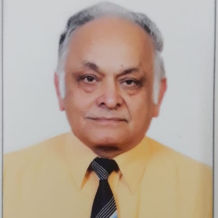
Dr. J M Dua
General Physician/ Internal Medicine Specialist
43 Years • MBBS, MD
Delhi
Apollo Hospitals Indraprastha, Delhi
Dr. Madhavi Thoke
General Physician/ Internal Medicine Specialist
17 Years • MBBS, MD General Medicine
Mumbai
Apollo Hospitals CBD Belapur, Mumbai
Consult a General Physician for the best advice

Dr. Afreen Banu Khan
General Physician/ Internal Medicine Specialist
12 Years • MBBS, DDM (Diab). FCC (Cardio)
Chennai
Apollo Speciality Hospitals OMR, Chennai

Dr. Anand Misra
General Physician/ Internal Medicine Specialist
14 Years • MBBS, DNB
Mumbai
Apollo Hospitals CBD Belapur, Mumbai

Dr Vinay Kumar A V
Nephrologist
8 Years • MBBS, MD - General Medicine, DM - Nephrology
Bilaspur
Apollo Hospitals Seepat Road, Bilaspur

Dr. J M Dua
General Physician/ Internal Medicine Specialist
43 Years • MBBS, MD
Delhi
Apollo Hospitals Indraprastha, Delhi
Dr. Madhavi Thoke
General Physician/ Internal Medicine Specialist
17 Years • MBBS, MD General Medicine
Mumbai
Apollo Hospitals CBD Belapur, Mumbai
More articles from Emergency Care
Frequently Asked Questions
1. How often should I check and update my outdoor first aid kit?
You should do a quick check before every trip to restock any used items. A thorough inspection for medication expirations and material degradation (e.g., cracked plastic, dried-out ointment) should be done every 6-12 months.
2. What is the single most important item in a wilderness first aid kit?
While all items are important, many experts argue that a means to call for help (a PLB - Personal Locator Beacon or satellite messenger) is paramount for true wilderness emergencies, as it can summon professional rescue when your skills and kit are not enough.
3. Should I pack an EpiPen even if no one in my group has known allergies?
This is a personal risk assessment. While not standard, some experienced backpackers carry one because it is the only treatment for a severe, unexpected anaphylactic reaction (e.g., from a novel insect sting). However, it requires a prescription. If you have a history of severe allergies, ensure you have your prescribed EpiPen and consult your doctor on Apollo24|7 before a major trip to discuss your management plan.
4. How can I make my first aid kit lighter for backpacking?
Repackage items into smaller containers or zip-top bags. Take only the amount you need for the trip. Choose multi-use items (e.g., tape that can secure a bandage or make a butterfly closure). Prioritise items based on the most likely injuries for your specific trip.
5. Is it safe to give over-the-counter medications to others in my group?
It is safest to only administer medications to yourself. For others, you should assist them in taking their own medication. Always ask about allergies or medical conditions before offering any medication to another person.
